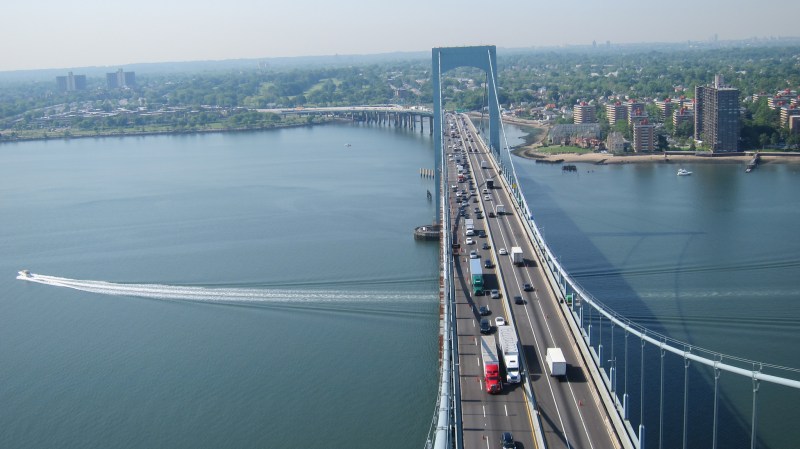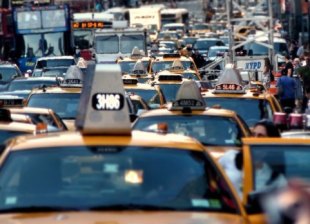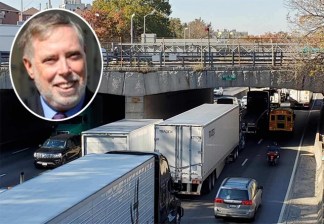The MTA May Finally Be Ready To Embrace Variable Price Tolling

The MTA is considering instituting peak and off-peak toll prices for its bridges and tunnels, a move to raise more money, but also shift driving patterns that veteran traffic analysts say is long overdue.
Buried among the MTA’s many fare and toll hike options, the agency mentions the following possibility: “Different crossing charges may apply by time of day and/or on predesignated Gridlock Alert Days.”
If the MTA Board approved the switch, every major (the Triborough, Whitestone, Throgs Neck and Verrazzano bridges and the Brooklyn-Battery and Queens-Midtown tunnels), mid-tier (Henry Hudson Bridge) and minor (the Gil Hodges and Cross Bay bridges) MTA crossing would be subject to tolls that were high during peak travel periods and lower during less congested times.
Peak and off-peak tolls have been mostly kicked around locally for their role in congestion pricing, since the traffic cordon is legally mandated to include variably priced tolls. But now the MTA is considering tolls that rise during peak hours on its bridges and tunnels — an attempt to reduce congestion in rush-hour. The Port Authority uses variable tolling.
MTA officials said that there are no exact details for what the prices on the tolls could be, but traffic engineers had some guidelines in mind.
“Two dollars probably isn’t high enough to get people to change their behavior significantly,” said “Gridlock” Sam Schwartz, the CEO of Sam Schwartz Engineering and a former New York City traffic commissioner, using the Port Authority’s peak/off-peak differential as an example of a variable toll that he felt fell short. “To really change people’s behavior, the most effective difference is probably in the three-to-five-dollar range.”
Nonetheless, the proposal itself is welcome news to Schwartz, who’s the author of a proto-congestion pricing plan that would have tolled the major East River bridges in exchange for removing tolls from the MTA’s bridges. In Schwartz’s opinion, the potential for changing the toll price structure is an opportunity for the MTA to go even further and rationalize the agency’s entire toll system and start making a distinction between crossings that bring drivers into Manhattan and those that drivers use to get between the other boroughs.
“It’s time to get on board with it, and time to end this practice of equal tolls for all the major crossings, which in my mind doesn’t make any sense,” Schwartz said. “We should do rational tolling. Why should drivers on the Throgs Neck Bridge, that has no transit other than a lonely bus going across, pay as much as drivers who cross the Queens-Midtown Tunnel when they have perhaps 20 subway and railroad and express bus options that they could take?”
MTA officials did not rule out the possibility of this kind of toll policy being introduced, referring back to Chairman and CEO Pat Foye’s statements that “everything is on the table” when it comes to changes in the face of the damage wrought by the coronavirus pandemic.
The switch the variable tolling could be a rare moment of comity between drivers and environmental activists, since the ultimate goal of peak and off-peak tolls is to clear the roads for people whose transportation options are truly limited to cars.
“The real thing that hurts everybody is gridlock and traffic congestion,” said environmental economist Charles Komanoff. “So the great potential for variable tolls is that you can reduce the hyper-congestion you have at certain times.”
Komanoff happens to have provided analysis in 2007 when the Tri-State Transportation Campaign suggested the MTA institute variable tolling, and determined that whether the peak pricing was used for a 12-hour or three-hour window, variable tolls could have saved drivers millions of hours. The proposed variable tolls also raised the same amount of revenue as a 50-cent flat toll increase, while providing better environmental and traffic benefits than a flat toll could.
The 2007 analysis’ inclusion of a 12-hour peak period could prove prescient, since traffic patterns in the city don’t come as bursts, but rather come as all-day events.
“Our facilities tend to fall more into a pattern of early in the morning until the early evening, where the traffic just goes up and stays there,” said Allison L. C. de Cerreño, the senior vice president and acting chief financial officer at MTA Bridges & Tunnels “So, as we explore the options, we’ll be taking a look at what makes most sense for our customers and our facilities”

